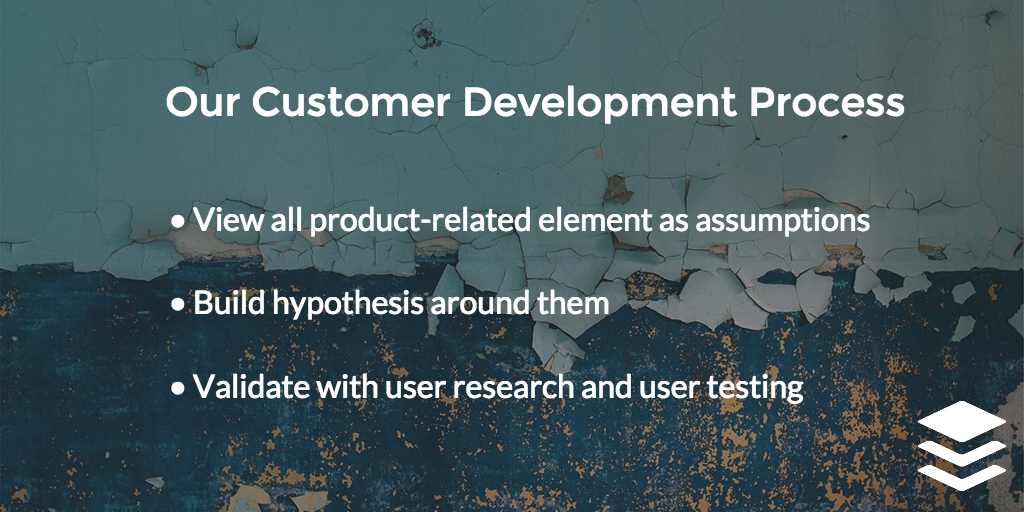In Buffer’s early days, the Lean Startup approach had a big influence on how Buffer took off. Joel blogged about this in 2011:
“I reached something that would be truly valuable for people. It also taught me the value of customer development: to take advantage of those emails coming in by asking people questions.”
Much of this mentality is reflected in the Buffer values today! Here is another illustration from Joel sharing his thoughts on how product management works with customer development:
“After the first paying customer, I took a step back, acknowledged that as a major milestone and decided a slight shift in focus was required. As a developer, it is easy to pile in more features at that point. I knew it was time to focus on marketing and further customer development. It was time to keep the balance of development, marketing and customer development with a product which had proved it was “good enough”. This has been a valuable lesson I want to take forward: when the signal is there that the product is good enough, shout about it!”
How we started a customer development team
I joined Buffer in April 2014, and my main mission then was to give Buffer customers the best experience possible. My background is in sales, I was very excited to dive in!
For a few months, we had many different conversations with our Buffer users. We soon realized that we knew fairly little about our users. We started to chat about this, and tried to frame our thoughts a little bit better: Who are our users? What problems are they trying to solve? Why do some users decide to upgrade to our Awesome plan?
Data can sometime help find the answer to questions like these. Other times, customer support will help surface answers, too—when Buffer users contact us, we make sure to tag conversations accordingly to identify issues and patterns.
It has been a great experience to see how customer support works with the product part of Buffer. Yet, we felt like something was missing: a proactive way to learn more about our users through engaging in conversations.
Without realizing it, we were starting to do customer development by asking questions to find out the “why” behind our users’ decisions and actions.
Hiten Shah is one of Buffer’s closest advisors, and he has an extensive knowledge on this topic: Hiten introduced us to the work of Cindy Alvarez, another inspiring customer development expert. Today, Tom Dunn, Patrik Ward and I work as “UX Researchers” across the different product areas of Buffer.
Customer development as a product management resource
In 2014, we started to have more proactive, structured conversations with our users: When referring back to The Lean Startup, one of key principles is “validated learning:”
“When you focus on figuring the right thing to build—the thing customers want and will pay for—you need not spend months waiting for a product beta launch to change the company’s direction. Instead, entrepreneurs can adapt their plans incrementally, inch by inch, minute by minute.”
We have been lucky to rely on insights that Buffer’s Happiness Heroes have passed on to our product team, and we also have a growth team helping us make sense of the data we have to make better decisions.
Today, we try to view all product-related element as assumptions and build hypothesis around those.
We continue testing and second-guessing our decisions as much as we can: Some of it is done through user research, where we focus on the “why” behind a decision. The other part of this is done through user testing, where we spend more time looking into usability and what feels best to users in terms of user interface.

We are excited to kick off a series of blog posts where we will be diving deeper into the methodology and techniques we use to do customer development.
Leo documented how we use Twitter to do fast customer development last year – we will be sharing more stories like that very soon!
Over to you
We would love to hear from you! What would you like to know about how we talk with customers to figure out where Buffer should go next. If one of us has chatted with you before, how was the experience?
We’re also looking for a new colleague to join us as the next Customer Developer and keep engaging in great conversations with Buffer users.
See you in the comments!
Try Buffer for free
190,000+ creators, small businesses, and marketers use Buffer to grow their audiences every month.


